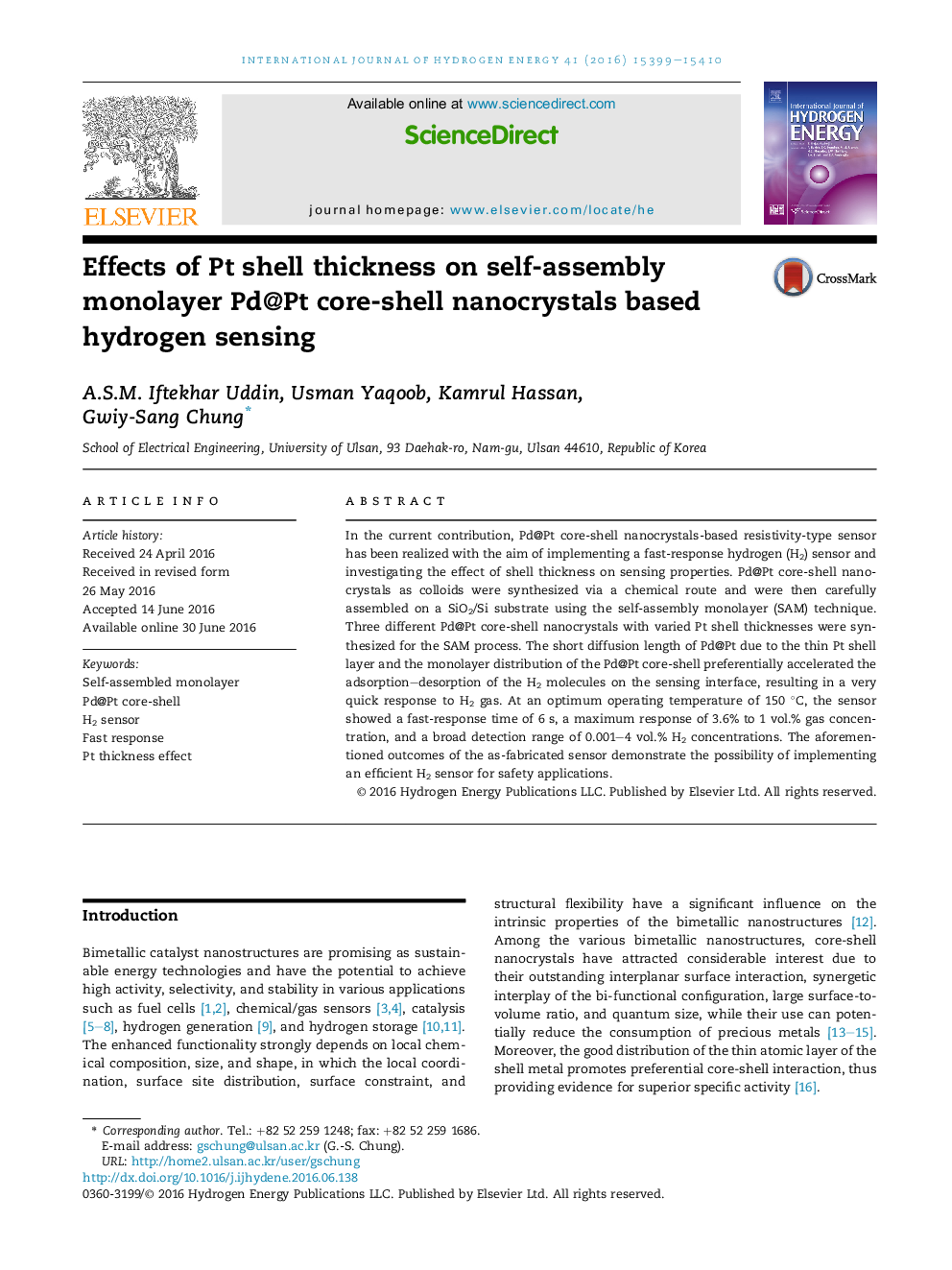| Article ID | Journal | Published Year | Pages | File Type |
|---|---|---|---|---|
| 1270418 | International Journal of Hydrogen Energy | 2016 | 12 Pages |
•Synthesis of Pd@Pt core-shell nanocrystals in a facile and rapid chemical route.•Deposition of Pd@Pt core-shell through self-assembly monolayer technique.•Role of monolayer distribution in fast H2 sensing.•Effect of Pt shell thickness in adsorption–desorption of the H2 molecules.
In the current contribution, Pd@Pt core-shell nanocrystals-based resistivity-type sensor has been realized with the aim of implementing a fast-response hydrogen (H2) sensor and investigating the effect of shell thickness on sensing properties. Pd@Pt core-shell nanocrystals as colloids were synthesized via a chemical route and were then carefully assembled on a SiO2/Si substrate using the self-assembly monolayer (SAM) technique. Three different Pd@Pt core-shell nanocrystals with varied Pt shell thicknesses were synthesized for the SAM process. The short diffusion length of Pd@Pt due to the thin Pt shell layer and the monolayer distribution of the Pd@Pt core-shell preferentially accelerated the adsorption–desorption of the H2 molecules on the sensing interface, resulting in a very quick response to H2 gas. At an optimum operating temperature of 150 °C, the sensor showed a fast-response time of 6 s, a maximum response of 3.6% to 1 vol.% gas concentration, and a broad detection range of 0.001–4 vol.% H2 concentrations. The aforementioned outcomes of the as-fabricated sensor demonstrate the possibility of implementing an efficient H2 sensor for safety applications.
